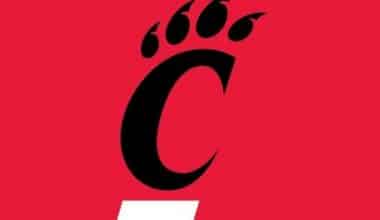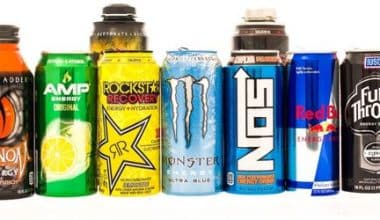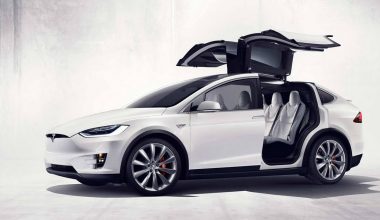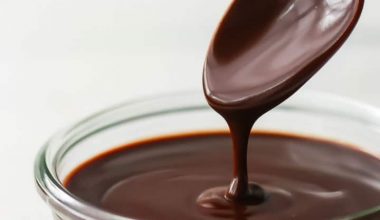There are numerous energy drink brands available today. But, which of these energy drink brands is the most popular, and which of them is healthy for you? This article will answer these and any other questions you have concerning energy drink brands. Let’s delve right in:
The Most Popular Energy Drink Brands
#1. Red Bull
If you’re looking for the best energy drink brand in the world, Red Bull is the clear winner, and it’s not even close. Its annual revenue is close to $9 billion, which is over $2 billion more than its nearest competitor.
It all comes down to the fact that Red Bull is popular throughout the world, not just in one country. The company has been around for a long and has added more varieties in recent years. However, while Red Bull is the most well-known energy drink, it is also the most expensive.
A 16-ounce can of Red Bull costs twice as much as its nearest competition. It has a devoted fanbase despite its high price.
#2. Eastroc Super Drink
While Eastroc Super Drink is a household name in the industry, it is mostly available in China and neighboring countries.
The caffeine content is probably a little lower than that of other energy drink brands, but we can’t get an accurate confirmation of the caffeine content per 100 mL for this product. Still, it’s a well-known brand, and if you’re traveling in China, it’s worth a look.
#3. Monster
Monster Energy, along with Red Bull and Eastroc, is the only energy drink brand in the world to surpass $1 billion in annual revenue, and it does so by a wide margin, with $4.5 billion in annual revenue. Although its core market is the United States, Monster energy drinks are available almost everywhere.
It’s an American company with a plethora of flavors to choose from. Monster isn’t a cheap energy drink, even though it’s not as pricey as Red Bull. Although it is more expensive than most other energy drinks, many people still buy them.
#4. NOS
NOS is an energy drink brand that does not appear to be popular, although it is always present in the top sales figures. The caffeine content is the same as Monster, but the sugar content is out of this world.
It’s less expensive per can than Monster and Bang, but the difference isn’t significant. Unlike Bang, Monster, and Red Bull, which all have multiple flavors, NOS is all or nothing. Either you like it or you don’t.
#5. Lucozade
In the United Kingdom, Lucozade is one of the most popular drinks. market. While it markets itself as an energy drink, which it is in many ways, the caffeine content per serving is more akin to that of a soda.
However, the brand itself is the oldest on this list, and if you ever find yourself in the United Kingdom, this is a drink you should try.
#6. Bang Energy
Many people believe Bang Energy is a new energy drink brand, yet it has been in business since 1993. It’s just recently that it’s gained a lot of traction.
There are numerous varieties to select from, and if you’re searching for a caffeine-packed energy drink, this is it. However, although the extra caffeine is beneficial to some, it is detrimental to others. It’s in the same price range as Monster energy drinks, so it’s not the most costly option, but it’s also not the cheapest.
#7. 5 Hour Energy
5 Hour Energy is an energy shot, not a drink, yet it is the world’s most popular energy shot. Each shot contains a lot of caffeine, but that’s because you’re only intended to drink two ounces at a time.
It’s also really pricey, and you’ll consume it in a matter of seconds. However, if you need an energy boost without downing an entire drink, 5 Hour Energy has you covered. But if you want something to appreciate that will endure a long time, this isn’t it.
#8. Rockstar
Rockstar Energy used to compete with Monster Energy, however current annual revenues demonstrate that is no longer the case. It is now a more affordable brand, with each drink costing around half the price of a Monster.
Nonetheless, Rockstar does not sell a lot of things. Many individuals simply cannot get over the taste, and there aren’t as many flavor alternatives.
Healthy Energy Drink Brands
Many popular energy drinks contain synthetic ingredients that provide a powerful jolt. There are, however, numerous clean, organic choices that take energy from natural sources.
Many companies that create healthy kinds of fuel understand the adage “you are what you eat.” Caffeine and other stimulants are widely available in nature from plants such as coffee, tea leaves, and others.
Natural ingredients and responsible sourcing are used to create healthy energy beverages that benefit your health, the economics of developing agricultural nations, and the health of the earth.
The list below will provide you with a variety of options for the top healthy energy drink brands available today.
#1. Runa
Runa is the Kichwa term meaning “totally alive,” which inventors Tyler Gage and Dan MacCombie used to define their range of Amazon-sourced healthy energy beverages.
During a journey to the Ecuadorian Amazon, Gage and MacCombie discovered their essential ingredient, a leaf known as guayusa.
For ages, indigenous cultures have used Guayusa as a vital energy source, boiling the leaves to extract high quantities of polyphenols and L-Theanine, which provide more energy than coffee without the caffeine crash.
Runa sources guayusa from organic farmers in Ecuador utilizing fair trade techniques to combine with various natural fruit tastes in their broad line of healthy energy beverages. Wild black cherry is my fave flavor.
#2. Zevia Energy
Zevia is a well-known beverage company dedicated to clean lifestyles and clean sources, offering a variety of zero-calorie and sugar-free teas and sodas.
They follow a similar principle with their Zevia Energy drinks, which contain only certified organic ingredients.
Zevia Energy beverages come in six various flavors, with organic caffeine serving as the primary energizer, as well as stevia leaf, organic sparkling water, and natural fruit and aromatic aromas.
It has the following flavors:
- Cola
- Lime Raspberry
- Grapefruit
- Ginger Mango
- Strawberry and kiwi
- Coconut pineapple
#3. Bai Bubbles
Bai Bubbles offers a wide range of tropic-inspired plant-based infusions, carbonated beverages, and caffeinated energy drinks.
Every flavor is inspired by tropical countries around the world. All of the drinks contain antioxidant infusions that will increase your immunity as well as your energy levels.
Bai Boost drinks contain 110 mg of caffeine derived from white tea leaves. There are four Bai Boost Flavors, each named after the place where its fruity components are grown:
- Black Raspberry Buka
- Pineapple Passion Fruit Cartago
- Tangerine Citrus Togo
- Strawberry Watermelon Watamu
#4. EBOOST Super Fuel
EBoost Super Fuel was founded in 2007 by Josh Taekman and John McDonald to offer active individuals with a clean energy source that would not taint their bodies with dangerous substances.
They have developed a wide range of energy drinks, pre-workout powders, and post-workout recovery infusions.
Their Super Fuel range gives natural caffeine energy as well as a package of ten vitamins to keep your system healthy after the caffeine wears off.
Super Fuel comes in four flavors, all of which are carbonated:
- Lime Ginger
- Mango Orange
- Lemonade with strawberries
- Raspberry Blue
#5. Hiball Sparkling Energy Water
Hiball Sparkling Energy Water, marketed as “Energy Selzters,” provides a complete combination of organic energy that includes guarana, Panax ginseng, and the Vitamin B complex.
The brand blends these powerful stimulating elements in a sugar-free, calorie-free, and refreshingly flavored seltzer.
Hiball Sparkling Energy Water contains 160 mg of caffeine, which is higher than most brands, so you can expect a strong and long-lasting energy boost.
There are seven varieties:
- Peach
- Vanilla
- Lime Lemon
- Blackberry
- Berry Wild
- Mint Watermelon
- Grapefruit
#6. V8 Plus Energy
V8 is a well-known and popular vegetable juice brand that is popular for a variety of occasions, ranging from weekend brunch cocktails to after-school munchies.
It has expanded its legendary vegetable juice formulas to include fruit juices and energy beverages. It is owned by Campbell’s, whose tomato soup recipe is as iconic as the Andy Warhol print that commemorates it.
No matter whatever V8 product you purchase, you will receive a full serving of fruits and vegetables.
As a result, V8 Plus Energy provides the same advantages as its vegetable and fruit juices, plus 80 mcg of caffeine derived from black tea.
#7. Matchabar Hustle
Matchabar, a stylish Brooklyn hipster café and one of the first exclusive Matcha cafes in the United States, has been featured in Vice, The Infatuation, Vogue, and Architectural Digest.
The brand began selling its unique matcha blend in powders and bottles after its highly popular debut in 2014.
The Matchabar Hustle is a Matcha-infused bottled energy drink, complete with a stylish logo.
It has 120 milligrams of caffeine from matcha and green tea extract. It also contains lemon and lime extract as well as sparkling water.
#8. Yerba Mate Guayaki
Yerba mate is a popular Argentine-born drink prepared from a strong-tasting green herb. Argentines drink it by pouring hot water over the herbs and sucking the infused water through metal straws from wooden cups.
In Argentina, Yerba Mate is more popular than coffee, and its invigorating benefits are comparable to the strongest cup of joe.
Guayaki’s broad collection of Yerba Mate products, including fruit-infused, sparkling, and loose-leaf yerba mate, provides this treasured Argentinian heritage to the world.
#9. NeuroSONIC
NeuroSonic, as the name implies, offers energy beverages to feed brain power and attention, with a proprietary blend of substances shown to improve brain function and energy levels.
The brand has a unique blend of caffeine, Alpha GPC, L-Theanine, Vitamin D, and antioxidants derived entirely from natural sources.
NeuroSONIC comes in two delectable flavors: blood orange and a superfruit infusion. The superfruit infusion with goji, pomegranate, and blueberry is my favorite.
#10. ZOA Zero Sugar
ZOA Zero Sugar is an energy drink created by fitness specialists for fitness enthusiasts, founded by champion wrestler and famous actor Dwane “The Rock” Johnson.
Johnson and his team of world-class bodybuilders and pro athletes developed an ideal energy formula that has all of the ingredients needed to fuel a workout and gain muscle.
The primary ingredients of Zoa Zero Sugar include Camu Camu and Acerola berries for immunity.
Branched-chain amino acids, choline, and electrolytes can help you build muscle and improve your performance.
Finally, B Vitamins and 160 mcg of caffeine from coffee beans and green tea leaves provide energy and focus.
#11. Matcha Love
Matcha has become a global fad in recent years, with coffee shops and bakeries serving matcha lattes, cakes, and even ice cream.
The Japanese-based drink is a strong and invigorating powder that may be mixed with hot water.
Matcha Love is a Japanese canned beverage that blends matcha powder with green tea for a high-energy boost.
Matcha Love boasts six times the antioxidants of a cup of green tea plus an injection of Vitamin C to boost immunity.
It’s a USDA-certified organic beverage that contains 28 mg of caffeine and 192 mg of Catechin Antioxidants.
One shot of Matcha Love leaves you feeling cleansed and refreshed without the jitters that come with highly caffeinated drinks.
#12. Cold-Brew Maca Coffee by Rebbl
Rebbl is a firm that cares about health and wellness on all levels, from our bodies to our communities to the world.
Dave Batson and Palo Hawken created Rebbl to develop organic energizing drinks using ingredients acquired from underprivileged farming areas around the world.
One of their delectable concoctions is the Rebble Maca Cold-Brew Coffee, which combines fair-trade cold-brew coffee with the Peruvian super-herb Maca to offer a wonderful beverage packed full of organic, eco-friendly, and ethically sourced caffeine.
#13. Steaz Energy
Steaz Energy may be the cleanest energy drink on my list because it is committed to using the simplest and fewest ingredients in its several lines of tea-based beverages.
The company collaborates with 1% for the Planet to donate a portion of its profits to environmental protection.
They have yerba mate, green tea, and sparkling yerba mate beverages that are made with a modest number of organic and fair-trade ingredients to provide a delightful-tasting energy drink.
Organic brewed tea, fruit flavors, acerola cherry extract for Vitamin C and antioxidants, and stevia for sweetening are all included in the green tea cans.
Each brand has a variety of flavors, ranging from unsweetened natural tea and yerba mate to fruit flavors.
#14. Yachak
Yachak is a yerba mate energy drink manufacturer that concentrates yerba mate into 165 mcg of raw caffeine to provide enough energy to power any endeavor, from office work to exercise.
While Yerba Mate is commonly associated with Argentina, the herb is endemic to all Amazonian countries.
Yachak’s Yerba Mate comes from Brazil, Paraguay, and Uruguay.
Yachak grows a tree in the Peruvian Amazon for every beverage purchased in recognition of the Amazon’s wealth. Fruit extracts, cane sugar, yerba mate, and citric acid are used in their Yerba Mate energy beverages.
#15. Guru Organic Energy
Guru Organic Energy Drinks, founded in 1999, claims to be the pioneering brand in organic, natural energy drinks.
As seen by their numerous energy drinks, their extended employment in the market has resulted in a solid grasp of energy sources from around the world.
Matcha, yerba mate, and the original organic blend are three globally inspired energy beverages.
In addition to the yerba mate or matcha, all three products contain guarana and green tea extract.
They also use organic cane sugar and fruit juices, and a sugar-free alternative is available.
Old Energy Drink Brands
If you were alive and thirsty in the 1990s, you remember it warmly because it was undoubtedly a golden age of beverages. If you needed a drink, there were numerous popular juices, energy drinks, sodas, and hybrids to pick from. There was Kool-Aid and Capri Sun for kids in the 1990s (two different but equally gorgeous versions of, essentially, fruit water); for adults in the 1990s, there were more sophisticated options like Mistic and Zima. Of course, the ’90s provided options for both kids and adults, with everything from Coca-Cola to Hi-C to Brisk Iced Tea.
It was a wild era, with firms hurling fruit-flavored soft drinks and juice box variations at the wall to see what would stick. For any beverage enthusiast, the 1990s were a magnificent era to which we wish we could return. Here are some energy drink brands that originated in the ‘90s
#1. Sobe
Sobe drinks were created in 1995 with images of ocean waves and “surf’s up” finger wags in mind. The lizard on the bottle of the fruit juices and teas still makes us feel relaxed, and the taste combinations are cooler than ever.
#2. Snapple
Snapple has gone through many phases of innovation in the beverage world as arbiters of taste—they’ve experimented with elements as flavors, “Snapple Pie” (pie-flavored juice drinks that had a brief run in the early 2000s), and even had product placement on a few episodes of Friends, where seemingly every time the fridge in Monica’s apartment was opened, someone was pulling the juice drink out of it.
#3. Mistic
This beverage’s history and existence are mostly unknown. Though it is still available in bulk online and at select stores across the country, the most visible impact it has had on modern culture is the ongoing Mandela Effect debates surrounding it; some insist that it was once spelled “Mystic” in the ’90s, while others recall Mistic as a wine cooler rather than a non-alcoholic juice drink, and still, others recall it being discontinued.
#4. Arizona
Arizona has been in business since 1992, with tall cans of juice or tea maintained consistently priced at 99 cents. Unlike other beverages, Arizona has remained committed to giving us with big beverage taste for less than a dollar. In recent years, they’ve also released sparkling and still vapor water variants, as well as expanded into snacks, indicating that the drugstore staple is here to stay.
#5. All Sport
PepsiCo’s All Sport is a sports drink designed to compete directly with Gatorade. It was first moderately carbonated but was rapidly replaced by a still variant. Though a few flavors have been discontinued (Dragonfruit, Mandarin Orange, and Strawberry Starfruit), All Sport remains a beverage option for anyone who needs to quench their thirst.
#6. Blue Ty Nant
Anyone who has watched Frasier on a regular basis will remember this infamous blue bottle. Throughout the 1990s and early 2000s, the beverage was featured on a number of other hit sitcoms, including Friends, The Big Bang Theory, and Ugly Betty.
#7. Crystal Light
Diet fads were popular in the 1980s and 1990s, and Crystal Light grew in popularity as a result. There were a few low-calorie, sugar-free options that took only a mix to transform a bottle or glass of water into lemonade or fruit punch, so Crystal Light had its moment. Crystal Light has lately expanded its product line to include artificial tea flavors, as well as squeezable liquid containers for on-the-go consumption.
#8. Hi-C Orange Lavaburst
Hi-C Orange Lavaburst was a mainstay not only for the ’90s in general but also for McDonald’s in particular. Customers throughout the country were outraged when the fast food company discontinued the beverage in 2017. Fortunately, the beverage was not limited to McDonald’s and is now accessible to local retailers.
#9. Clearly Canadian
Some businesses will listen if you yell loud enough. The famous effervescent drink Clearly Canadian dominated the 1990s, with product marketing on shows such as Sex and the City, Seinfeld, and Friends. After nearly a decade of absence from American shelves, Clearly Canadian has returned to join the ranks of flavored sparkling water.
#10. OK Soda
Coca-Cola, like PepsiCo, decided to go down a few different cola paths in the 1990s. OK Soda followed Coke II, which is widely regarded as one of Coca-greatest Cola’s marketing blunders. Coke created a “graveyard” flavor with OK Soda, which is when many flavors from the fountain machine are combined together to produce one unique and multilayered beverage. The marketing strategy was built on imitating and appealing to jaded Generation Xers, and it was simply too far ahead of its time.
#11. Tab
As a departure from the original formula, several variations on the diet cola were created throughout the 1980s and mid-1990s. Though sales have dropped significantly since the introduction of Diet Coke, Tab retains a diet cola cult following that keeps it afloat just long enough to keep it from being discontinued.
#12. Fresca
Fresca has undergone more changes than most soft drinks, including complete packaging redesigns and shifts in target markets. Coca-Cola recently set its sights on selling grapefruit-lime flavored soda to millennials who may not have tried the drink themselves but heard about it from their parents in the 1990s and late 1980s.
#13. Grape Soda by Welch’s
Welch’s has a monopoly on grape-flavored drinks, and for good reason: they offer a plethora of grape-centric products, ranging from jams and jellies to juices made from the fruit. After the soda was discontinued in 2011, an online petition was launched, and multiple sources have reported that the carbonated concord grape beverage is set to make a nationwide comeback soon.
#14. Clamato
The combination of clam and tomato juice peaked in the late 1980s and early 1990s, but it still shines as a mixer for bloody marys and, more importantly, as a component of a michelada. Though the idea of combining clam and tomato juice may raise a few eyebrows, the flavor has stood the test of time and proven to be one of the most important mixers for savory tomato drinks.
#15. Nesquik
Although Nesquik has been around for a while, every ’90s kid remembers chugging the sugary cocoa after a long day of long division.
Who Created Energy Drinks?
Post-World War II Japan gave birth to the contemporary energy drink. Taisho Pharmaceuticals produced Lipovitan D in 1962, a herbal “energizing tonic” sold in minibar-sized bottles. Originally, the tonic was marketed to truck drivers and factory workers who needed to stay awake for long shifts.
Lipovitan, which sounds, looks, and smells like cough syrup, was marketed as a drink to improve physical and mental functions. The main ingredient in the drink is taurine, which would later become an important ingredient in Red Bull. The largest Lipovitan bottles on the market contain up to 3,000 mg of taurine, as well as a warning label advising that no more than 100 mg of taurine should be consumed each day.
Krating Daeng was launched to the Japanese market in 1976 as an energy drink containing caffeine, taurine, and B vitamins. Krating Daeng and similar drinks gained popularity in the Asian food market after becoming extremely popular among Japanese executives in the 1980s.
How Are Energy Drinks Dangerous?
Researchers at the Beverage Marketing Corporation, such as Gary Hemphill, attribute the rise of energy drinks to both people’s need for energy and very clever marketing. These beverages are essentially normal colas that have been on the market for decades and have been repackaged with labels that promise energy, focus, and increased performance. Hemphill maintains that the ingredients in these energy drinks are very similar to those in standard sugary sodas.
What are the most popular energy drink brands?
Popular energy drink brands include Red Bull, Monster, Rockstar, and 5-hour Energy.
What is the difference between energy drink brands?
Energy drink brands can vary in flavor, ingredients, caffeine content, and level of energy boost.
What are the best energy drink brands for taste?
The best energy drink brands for taste depend on personal preference, but popular choices include Red Bull and Monster.
What are the best energy drink brands for energy boost?
The best energy drink brands for energy boost depend on personal preference, but popular choices include Red Bull and Monster.
What are the best energy drink brands for athletes?
The best energy drink brands for athletes depend on personal preference, but popular choices include Red Bull and Monster.
What are the best energy drink brands for students?
The best energy drink brands for students depend on personal preference, but popular choices include Red Bull and Monster.
What are the best energy drink brands for people with busy lifestyles?
The best energy drink brands for people with busy lifestyles depend on personal preference, but popular choices include Red Bull and Monster.
In Conclusion,
There are many various types of energy drink brands, each with a different substance but all with the same goal: to raise one’s energy and spirit with an inexpensive drink. Each of them has different sales based on demand and supply.
There are numerous factors to consider when purchasing one, and product and brand availability varies by country. It is unquestionably worthwhile to purchase one, but first monitor your health and understand your limits.
When it comes to the most popular energy drink brands, Red Bull and Monster clearly lead the pack, but that doesn’t mean they’ll be the ones you enjoy the most or that they’ll stay that way forever.
- PAYROLL COMPANIES: Top 19+ Best Picks for Small Businesses, Updated!!!
- MONSTER LOGO: Meaning, Origin, and What You Should Know
- TEA BRANDS: 2023 World’s Best Brand Picks & What You Should Know!!!
- ICED TEA BRANDS: Best Iced Tea Brands in the US (UPDATED!)






